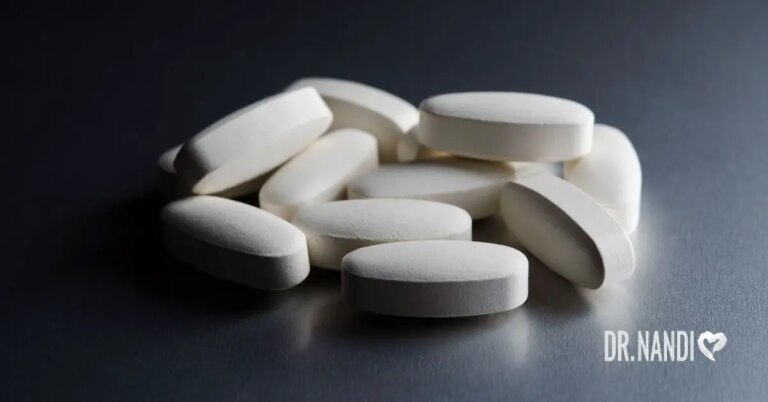Utah just made history—and sparked a nationwide debate. On March 27, Governor Spencer Cox signed a law making Utah the first state in the U.S. to ban the addition of fluoride to public drinking water. Starting May 7, cities and water systems across the state will no longer be allowed to fluoridate their water, regardless of local policy.
For decades, fluoride has been promoted as a low-cost, effective way to prevent cavities. Public health officials call it one of the biggest medical breakthroughs of the 20th century. So why is Utah walking away from it now—and what does it mean for the rest of the country?
This move isn’t just about dental health—it’s about personal choice, government authority, and growing skepticism around long-standing public health policies. Here’s what you need to know.
What the Law Says
Utah’s new legislation bans any addition of fluoride to public drinking water across the state. Starting May 7, no city, town, or water district in Utah will be allowed to introduce fluoride into the water supply—regardless of past local decisions or voter-approved policies. The law also blocks any future ordinances that would require or allow fluoridation at the local level.
The bill doesn’t ban fluoride outright. Instead, it shifts responsibility to individuals. Pharmacists in Utah will be permitted to prescribe fluoride tablets as an alternative, and the state’s Division of Professional Licensing is tasked with setting clear guidelines for these prescriptions.
Governor Cox has emphasized that the ban isn’t rooted in health concerns but in a belief that water fluoridation should not be a government-imposed standard. He pointed out that nearly half of Utah’s population already lives in areas without fluoridated water and said there hasn’t been a clear difference in dental health between fluoridated and non-fluoridated regions.

The Public Health Perspective
For nearly 80 years, water fluoridation has been a cornerstone of public health in the United States. It’s credited with reducing tooth decay across all age groups and is especially beneficial for people who can’t afford regular dental care. The Centers for Disease Control and Prevention (CDC) calls it one of the top 10 public health achievements of the 20th century, citing data that fluoridated water lowers cavity rates by around 25% in both children and adults.
Major health organizations—including the American Dental Association (ADA), the American Academy of Pediatrics, and the World Health Organization—continue to support community water fluoridation. They emphasize its effectiveness, safety at current levels, and cost savings. The CDC estimates that fluoridation saves roughly $32 per person annually by reducing the need for dental treatment.
Experts also stress that fluoride in water is a passive, population-wide preventive tool. Unlike brushing with fluoride toothpaste or taking supplements, it doesn’t rely on individual habits, access, or compliance. That’s why public health officials warn that removing fluoride could hit lower-income communities the hardest—those who often have the fewest resources for oral health care.
Why Supporters Back the Ban
Supporters of Utah’s fluoride ban argue that mass medication through public water crosses a line. Governor Spencer Cox has been clear: for him, the issue is less about fluoride’s risks and more about government overreach. He points out that despite Utah’s split fluoridation rates—only about 44% of residents receive fluoridated water—there’s been no obvious difference in dental health outcomes between regions. From his perspective, that undermines the case for a statewide mandate.
Others backing the bill echo concerns about individual choice. They argue that people should be able to decide what goes into their bodies, especially when it comes to substances added to essential resources like drinking water. Some lawmakers also raised cost concerns, noting that fluoridation infrastructure and maintenance can be expensive for local water systems.
The bill’s sponsor, Rep. Stephanie Gricius, acknowledged that fluoride has dental benefits but emphasized that it’s ultimately a matter of personal freedom. Instead of imposing fluoride through the water supply, the law shifts responsibility to individuals—giving them the option to seek out fluoride on their own terms through prescriptions or dental products.
The RFK Jr. Factor
Robert F. Kennedy Jr., now serving as Health and Human Services Secretary, has been one of the most vocal national figures calling for an end to water fluoridation. Although he has no formal medical background, his influence has added fuel to a movement that questions long-established public health practices. In late 2024, he publicly stated that the second Trump administration would encourage all U.S. water systems to remove fluoride, citing concerns about its potential to harm neurological development and contribute to various health issues.
Kennedy has claimed that fluoride exposure is linked to conditions like IQ loss, thyroid dysfunction, arthritis, and even cancer. However, these claims remain unproven at the levels used in U.S. public water systems. Most studies that have found concerning effects involve much higher exposures—typically in countries where natural fluoride levels are far above the U.S. standard of 0.7 parts per million.
While his views have drawn criticism from scientists and medical organizations, they’ve also found support among those who distrust government-mandated health policies. His position fits into a broader narrative of pushing back against top-down health interventions, and it’s likely contributed to growing legislative interest in rolling back fluoridation in other states.

Scientific and Medical Response
The scientific consensus on water fluoridation remains consistent: at recommended levels, it is safe, effective, and one of the simplest ways to reduce dental decay. The CDC, American Dental Association (ADA), and dozens of medical organizations continue to endorse fluoridation as a proven public health tool. They emphasize that the only well-documented side effect at typical municipal levels is mild dental fluorosis—faint white marks on teeth, mainly in children—which is cosmetic and not harmful.
Concerns about fluoride’s impact on health—ranging from bone fractures to cancer—have been studied extensively. The National Cancer Institute, U.S. Public Health Service, and National Research Council have all reviewed the data and found no clear evidence linking fluoride in water to cancer or other major health problems. The occasional outlier studies that suggest risks usually involve doses far higher than those used in American water systems.
Critics argue that new research, especially on potential neurodevelopmental impacts, warrants closer scrutiny. One recent review suggested a correlation between high fluoride exposure and lower IQ in children, but much of the data came from regions with naturally elevated fluoride levels—not from communities using standard fluoridation. Health authorities say more research is welcome but caution against policy changes based on inconclusive or misapplied data.
My Personal RX: Protect and Optimize Your Water Intake
Access to clean, safe drinking water isn’t just a basic necessity—it’s a cornerstone of public health. When public water systems are compromised by contaminants like heavy metals, pesticides, or pathogens, the effects ripple far beyond hydration. From gut health to immune function, every system in our body depends on the quality of the water we consume. Protecting and prioritizing clean water is one of the most foundational—and powerful—ways we can support our individual and collective well-being.
- Use a Quality Water Filter at Home: Even if your local water supply meets safety standards, trace contaminants can still be present. Investing in a high-quality water filter can reduce your exposure to heavy metals, chlorine, and other chemicals that may disrupt gut and immune health.
- Support Your Gut’s Natural Defense: If contaminants or imbalances are affecting your water or digestion, a healthy gut microbiome becomes even more important. MindBiotic helps strengthen your internal defenses with probiotics, prebiotics, and adaptogens that enhance gut resilience and overall health.
- Choose Whole, Hydrating Foods: Water isn’t just something you drink—it’s also in the food you eat. The Healthy Gut Cookbook features recipes with water-rich, anti-inflammatory ingredients like cucumbers, leafy greens, and soups that support hydration while nourishing your gut.
- Carry a Reusable, Safe Water Bottle: Ditch the plastic bottles and use a stainless steel or glass reusable water bottle. Not only does it reduce exposure to microplastics, but it also helps you stay hydrated consistently without contributing to environmental waste.
- Boost Immune Function with Proper Hydration and Immune Support: Hydration is critical for the immune system to function properly. Immune Support supplements, rich in key vitamins and minerals, work even better when your body is well-hydrated—helping your defenses run smoothly.
- Be Aware of Public Water Quality Reports: Stay informed about the water in your area. Most municipalities release annual water quality reports—read them. If contamination is detected, you’ll be better prepared to take action and protect your health.
- Avoid Sugary and Artificial Drinks: Replace sodas and artificially flavored beverages with clean water or herbal teas. These sugary alternatives not only dehydrate you but also feed harmful gut bacteria.
- Hydrate Consistently, Not Just When You’re Thirsty: Waiting until you’re thirsty often means you’re already mildly dehydrated. Sip water throughout the day to support digestion, nutrient absorption, and immune regulation.
- Educate and Advocate for Safe Water Access: Whether it’s donating to clean water initiatives or encouraging better local regulations, advocating for clean public water is a direct investment in community health.
Listen to Your Body: Fatigue, brain fog, and digestive issues can all stem from inadequate or poor-quality water intake. Pay attention to subtle symptoms—they may be your body’s way of signaling a need for better hydration.











 Subscribe to Ask Dr. Nandi YouTube Channel
Subscribe to Ask Dr. Nandi YouTube Channel










